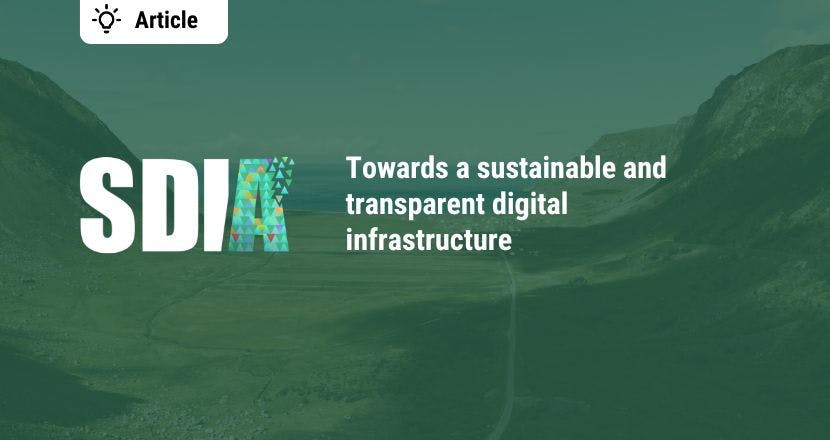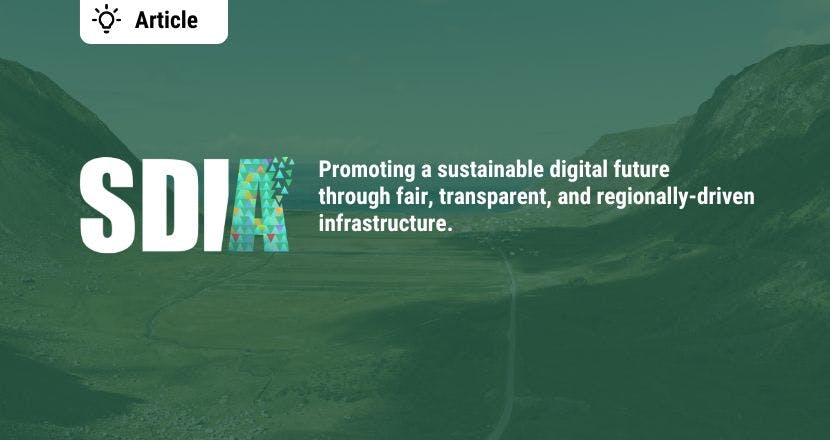The main point of interaction between society and the digital economy is the digital products and services that it provides. These can be social networking platforms such as Facebook and Instagram, as well as service-based offerings such as Uber or Delivery Hero. The same is true for business-to-business products and services, where we can find many customer relationship management (CRMs)-as-a-Service or automation services that are used by companies and their employees.
Misleadingly, the companies that make these digital products and services are referred to as technology companies, even though most of them do not create technology but simply apply it. To create digital products, they assemble technology components – mainly free, open-source software technology. In turn, they combine them with an interface that people can interact with as a business model. Thus, digital products and services companies depend on the following ingredients:
- Open-source and free technology to build products and services from;
- Business models to generate shareholder returns;
- Fuel to power their digital products and services; and
- Networks to connect digital products and services with customers.
These factors also help to explain the breathtaking pace of new products appearing on the market. Each new product is merely an iteration, a tweaked or slightly altered assembly of the same technological components. For example, more than 100 messaging applications now exist, with few of them actually having invented a unique messaging technology. Most of them are using the same technologies, but have slightly changed the business model or the user interface to differentiate.
Another important component is the “fuel,” what we refer to as “digital power.” Not to be confused with the electricity or energy infrastructure underpinning digital technologies or data, which is not merely the input of digital technology, but also its output – a common misconception. Digital infrastructure is a combination of facilities that generate digital power and networks that transport digital products’ data between processing/storage facilities and customers.
This is very similar to electricity, where power grids (networks) bring electricity from power plants to customers. The power plants of the digital infrastructure are data centers, housing the equipment that generates digital power. A fiber-optic network delivers human inputs, which are then processed using digital power and the results are sent back. All of this can happen within the same device (e.g., a smartphone), which possesses its own storage and processing capacity while being connected via a network to larger digital power facilities. Most digital products and services rely on a large network of digital power generators to perform the complex functions required for digital products and services today.
In sum:
- Digital products and services assemble technology, business models, and require fuel;
- Digital infrastructure provides both the fuel (i.e., digital power) and the transport mechanism for data (i.e., fiber networks); and
- Data centers are the large-scale power plants of the digital economy, whereas fiber networks are the power grids.
What sustainability means for digital infrastructure
As defined in the landmark 1987 Brundtland Report, sustainability refers to meeting our own needs without compromising the ability of future generations to meet their own needs. In addition to natural resources, we also need social and economic resources.
When it comes to digital infrastructure, and as alluded to above, it consists of many parts working together. First, are the digital power generators and data storage devices (servers), to which the primary components are silicon chips. Second are the buildings and infrastructure to house those generators (electrical conversion, cooling, building structures, etc.), which typically refers to data centers. Third, are the fiber-optic networks to transport and connect the generators and customers. Finally, all of this runs on electricity.
Of these parts, networks are the most sustainable today. Shooting photons — light — through fiberglass does not cost much energy. Moreover, once installed, glass fiber cables can theoretically last centuries; they do not have to be replaced or upgraded. Therefore, the main culprit behind the unsustainability of digital infrastructure lies within the generation of digital power and storage. Defining sustainable digital infrastructure for Europe should, therefore, focus on three key aspects.
First, it should have no negative impact on the environment. Green electricity is the starting point, but also green buildings, energy and heat re-use, cooling, recycling of all electronic waste, removing diesel generators, and minimizing waste and unused capacity.
Second, it should enable the competitiveness of digital businesses that decide to use European digital infrastructure. Competitiveness enables Europe to attract foreign digital product and service companies.
Lastly, it should enable inclusive prosperity. The operating model of global, large-scale digital infrastructure actors today is not creating prosperity for the regions the infrastructure is built in. Infrastructure should empower local businesses, creating sustainable digital ecosystems. The Internet enables one global market in which everyone can participate; it embodies decentralization. We must avoid building another layer on top which benefits only a handful of companies.
The role of the EU to demand transparency and set boundary conditions
Europe is already pioneering many deep technical regulations such as the Ecodesign guidelines for servers. But what is missing is effective system-wide action to kickstart the creation of sustainable digital infrastructure in Europe.
The digital economy is a system, of which digital infrastructure is the foundation. Today, we have no reliable information on how many resources this system consumes. Nor do we know the amount of emissions it generates. Without this information, it is difficult for innovators and researchers to invent new sustainable solutions, and it is even more difficult for governments to act. It also hinders collaboration across industry-boundaries, especially relevant considering that more than 30 various industries with thousands of companies each make up the digital economy.
Creating transparency can happen on two levels:
- On the level of digital products and services: creating transparency on energy and resource consumption, enabling customer choice; and
- On the level of digital infrastructure: creating national and regional transparency registers for digital infrastructure operators to report into/share information with.
A combination of these two solutions, focusing first on infrastructure and then products, will accelerate change and drive innovation to create a sustainable digital economy. This is also in-line with the rationale behind our Open Data Hub, an initiative we announced earlier this year that is meant to boost transparency, trust, and data availability to help researchers, industry, and society realize a sustainable digital economy.
The second step is to set boundary conditions on the most important sustainability metrics for digital infrastructure, along with a timeline for when they need to reach net-zero. The technologies to get to net-zero on all these metrics already exist. And with our Roadmap, we show all the activities that are required to get to net-zero. Yet, the EU has to set clear targets — net-zero on all environmental impact, resource consumption metrics, and a target for socio-economic benefits.
The digital economy benefits massively from not accounting for the environmental and social costs of digital products. It is the reason why cloud providers like Amazon Web Services (AWS) can record 42% profit margins. They are not accounting for the true costs or the environmental and climate-related externalities involved. This can only happen, however, if the EU sets the proper boundary conditions. It will lead to more competitive, and environmentally sustainable infrastructure.
Policy recommendations for the European Union
Given the challenges we outline, there are multiple ways that the EU can continue to develop policy in a way that addresses the complexity and interconnected nature of digital infrastructure. Four key recommendations are as follows:
- Require national governments to implement a transparency registry that minimally lives up to the requirements and metrics set by the European Commission. Each member state has the freedom, however, to require additional metrics.
- Orchestrate the development of a roadmap to create milestones (and deadlines for sub-deliverables) to reach net-zero emissions by 2030.
- Provide the regulatory framework to price externalities in order to give a true reflection of the environmental and social costs, specifically of digital infrastructure.
- Support European initiatives and companies seeking to address ICT sustainability via financing, easing tax and regulatory burdens, and facilitate an enabling policy environment that incentivizes and rewards sustainability.
The European Union and the Greens/EFA, in particular, continues to be a leader that is driving real, evidence-based sustainability policy forward, and there is much work still to be done. We will continue to support the Greens/EFA in helping to make our shared vision for a sustainable digital economy a reality and are grateful for their commitment to both people and the planet.

.jpg?ixlib=gatsbyFP&auto=compress%2Cformat&fit=max&rect=0%2C44%2C600%2C800&w=600&h=800)



